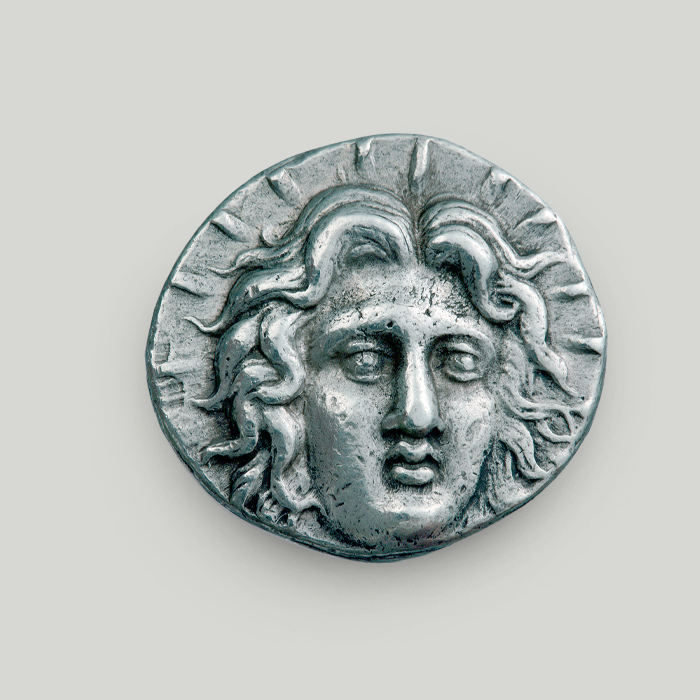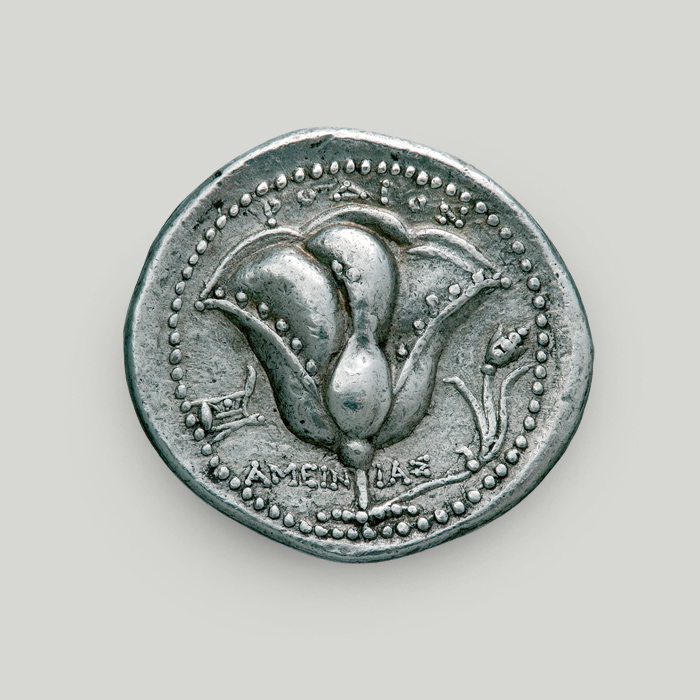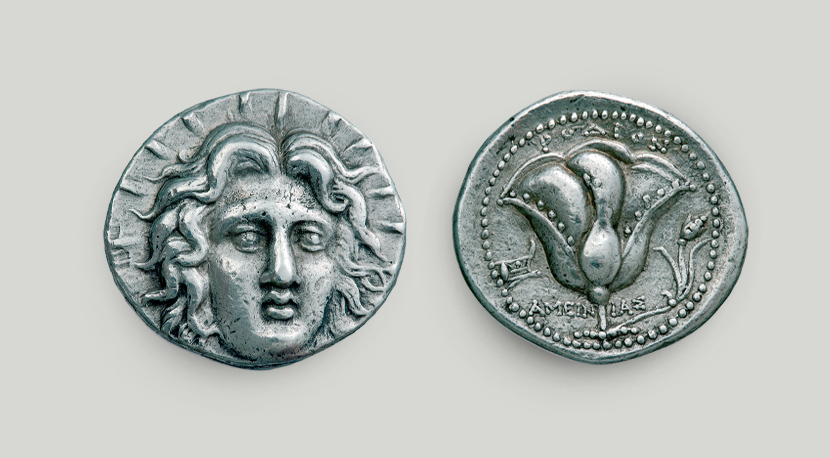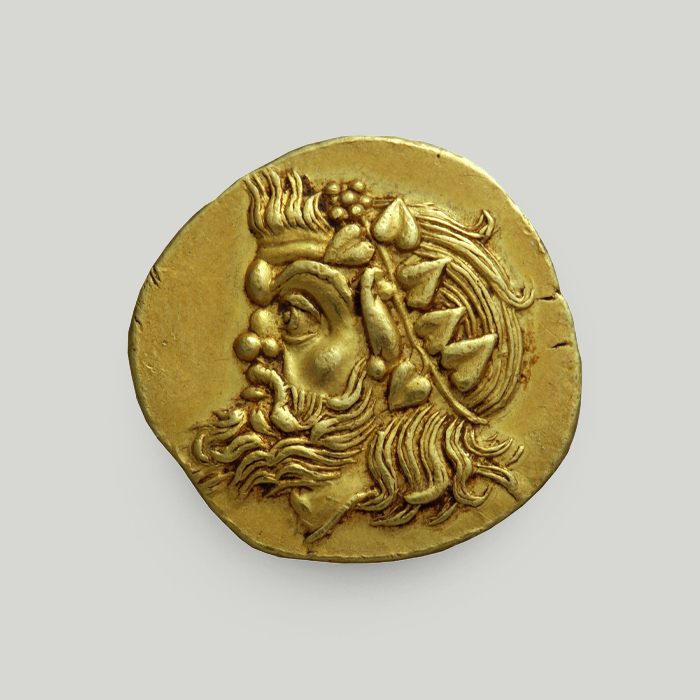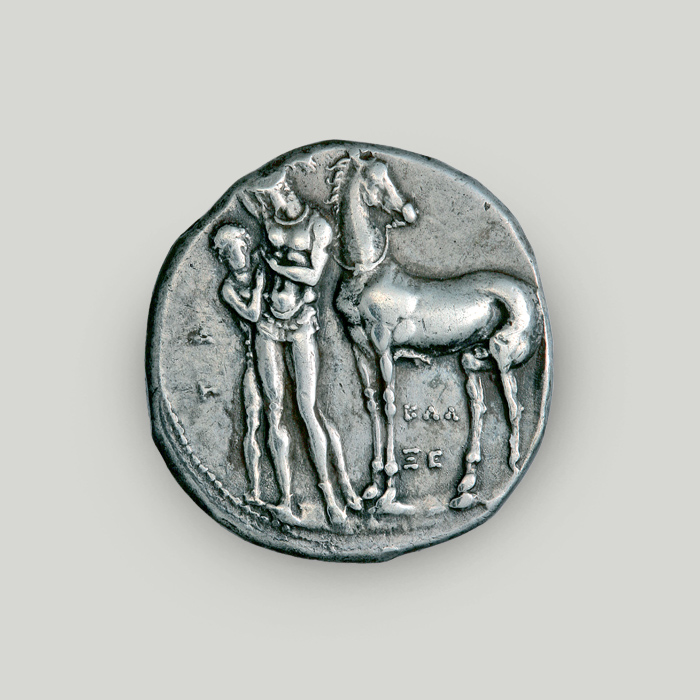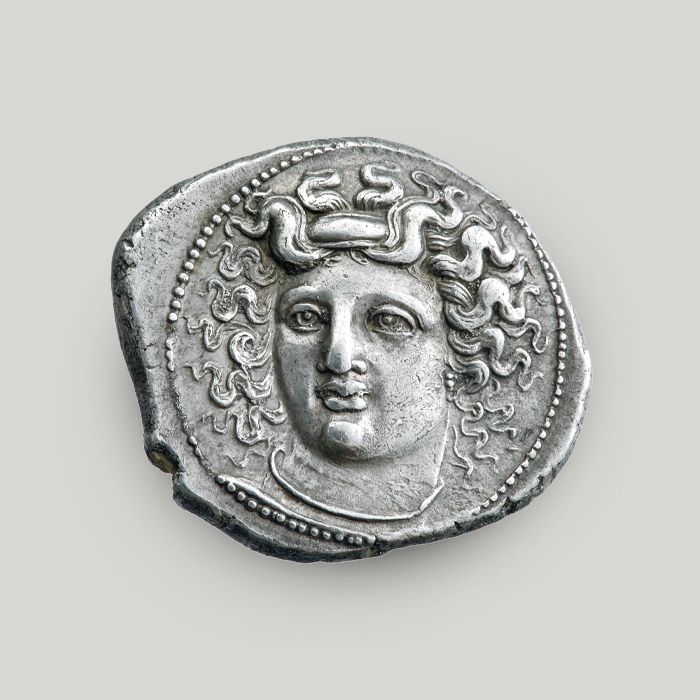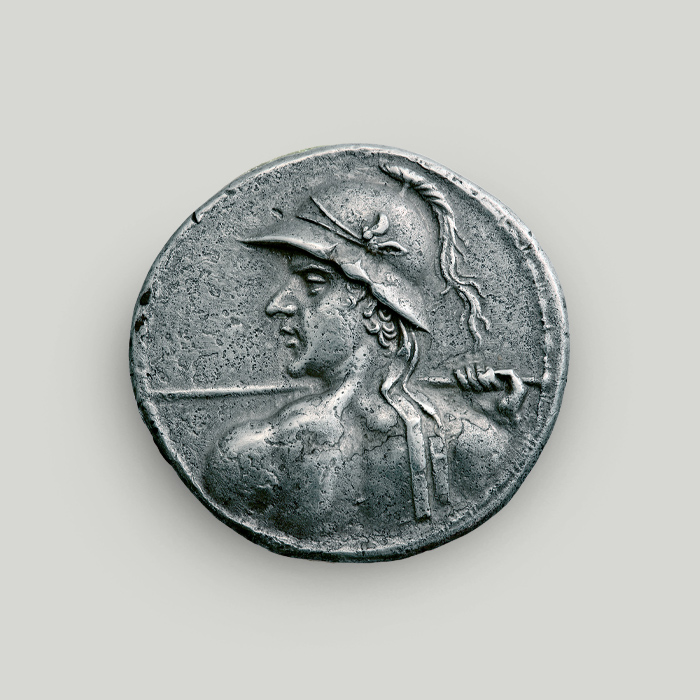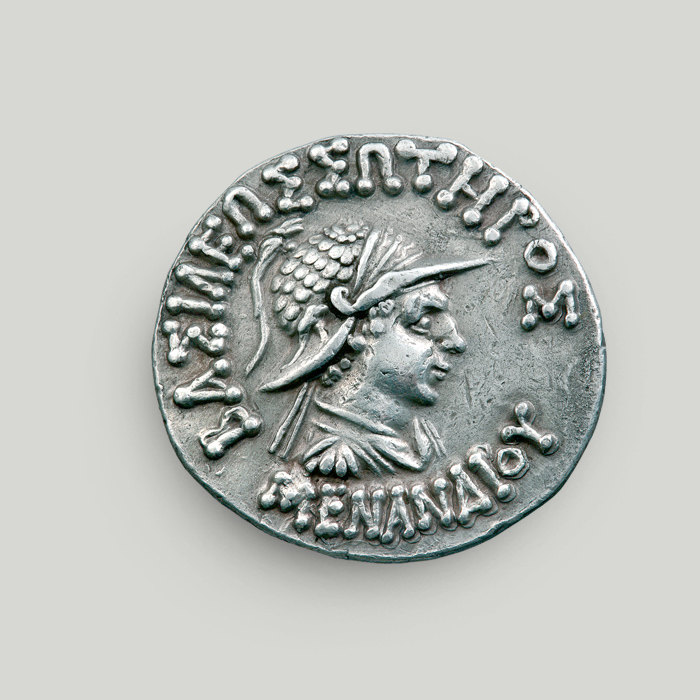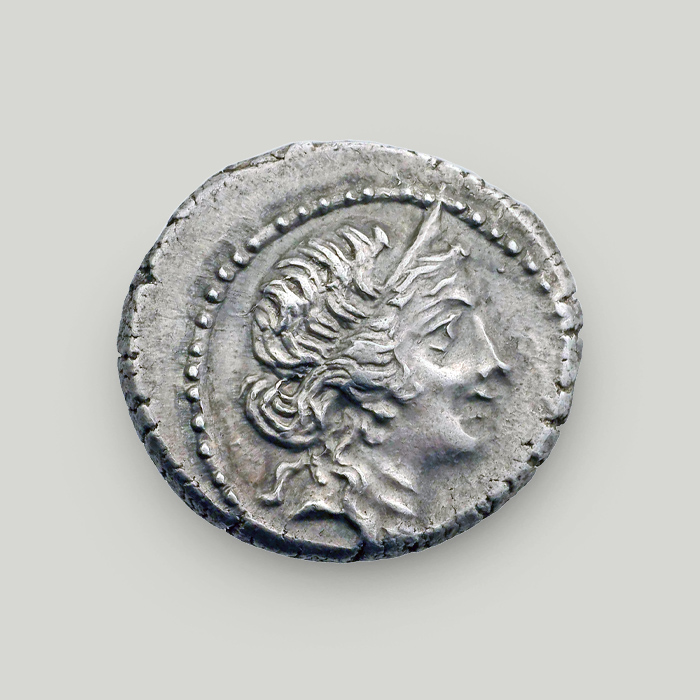Silver tetradrachm, Rhodes
The silver tetradrachm of Rhodes is a fine sample of the island’s coinage – among the richest in antiquity. Rhodian coins have impressive depictions of the god Helios (Sun). On the reverse, the silver tetradrachm depicts a rose, which is a play on words with the city’s name, as rhodon is Greek for rose.
Obverse
Radiating head of the god Helios (Sun) with rich hair. The god is depicted facing forward.
Reverse
A rose within a circular dotted border. On the left, the prow of a ship. Above the rose, the legend reads ΡΟΔΙΟΝ (of Rhodes). The legend running left and right of the rose’s stem reads ΑΜΕΙΝΙΑΣ (Ameinias).
Rhodes and the Doric Hexapolis
The island of Rhodes has been inhabited since the Mycenaean era. In the 10th century BCE, it was inhabited by the Dorians.
The first 3 city-states to be founded were Lindus, Ialysus and Camirus. Along with Cos, Cnidus and Halicarnassus, these cities formed a federation known as the Doric Hexapolis.
The Rhodians expanded their dominance into the neighbouring shores of Caria, Asia Minor, which became known as the Rhodian Peraea. They also colonised Sicily.
Rhodes as a city-state
The city of Rhodes was formed by the 3 existing cities of Lindus, Ialysus and Camirus at the northern tip of the island in 408 BCE. It soon became an administrative and political hub in the area, boasting a splendid port.
The early 4th century BCE saw the beginning of a time of increased political instability, with Athens and Sparta fighting to assert their dominance.
In the end, the city was conquered by Mausolus, the satrap of Caria in Asia Minor. It remained under Carian rule until the Persian empire was dismantled and the city was liberated by Alexander the Great in 332 BCE.
Rhodian coinage
The coinage of Rhodes was among the richest in antiquity. Minting began immediately after the new city was formed in 408 BCE.
Its main feature is the standard coin type depicting the head of the god Helios and a rose. The rose is a play on words with the city’s name, as rhodon is Greek for rose.
The names of the moneyers were struck on the coins. The legend on the reverse of the Rhodian tetradrachm reads ΑΜΕΙΝΙΑΣ (Ameinias).
The god Helios
Light and darkness, sunrise and sunset, and the various weather phenomena always made people wonder and stirred their imagination. It was human imagination that envisioned the radiating sun disc as a divine face with golden hair and a crown of sun rays. This is how the god Helios came to be.
Helios, the sun god, overlooks everything like an all-seeing eye. Every day, he rides from his palace in the East to his palace in the West, in his fiery chariot led by 2 or 4 horses.
In the morning, he rises from one side of the Ocean, leaving his homeland of Aea, and soars to the centre of the firmament, where he starts his descent to the other side of the Ocean.
In the East, the Nereid Thetis opens the door to let Helios’ chariot out every morning. At sundown, Poseidon awaits him in the West to receive his horses, as they need to rest.
During the night, a winged bed takes the sleeping Helios from the West back to the East, so that he may start his journey anew.
The island of Helios
The Rhodians believed to be descendants of Helios, and their city was his place of worship par excellence.
According to myth, when the gods drew lots for the territories they would rule over, Rhodes was left out as it was submerged at the time. On that same day, Helios was away on his daily journey and the gods did not include him in the division.
When Zeus heard Helios’ chariot approach, he wished to start over.
However, Helios saw Rhodes the moment it was about to emerge from the sea and asked to be allotted the beautiful island. So, Rhodes became the island of Helios; he, in turn, became its patron and protector and shone his rays upon it for eternity.
From his union with the eponymous nymph Rhode, he had 7 sons, called the Heliadae.
The famous statue of the Colossus of Rhodes, one of the 7 wonders of the ancient world, was also erected in honour of the radiant god.
The island was named after the rose (rhodon in Greek), Helios’ sacred flower.
Fractions and etymology
As suggested by its name, the tetradrachm equalled 4 drachmas. Each drachma equalled 6 obols.
Before the invention of coins, people used iron spits of 1-1.5 meters in length for their daily transactions.
The spit was called ovelos, and 6 of them were considered a standard handful. This handful was later dubbed “drachma”, as it could be grasped (drattomai in Ancient Greek) in a person’s fist.
When coins started to circulate, the word ovelos (the previously used spit) changed to ovolos (“obol” in modern numismatics) and was used to denote the value once held by 1 spit, i.e. 1/6 of a drachma.
The coin in our publications
The silver tetradrachm is mentioned in the book Journey to the Islands: The Numismatic Evidence by Dr Dimitra Tsangari. The publication presents the history and coinage of the Greek islands, including maps and photographs of 34 coins from the Alpha Bank Collection.
Buy the publication Journey to the Islands: The Numismatic Evidence on the Alpha Bank e-shop.
The Alpha Bank Numismatic Collection is not open to the public.
Research visits to the Numismatic Collection can be organised upon request.
Contact us to book your visit.
